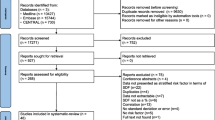Abstract
Purpose
This study aimed to investigate the effect of male semen quality, occupational exposure, and lifestyle on recurrent pregnancy loss (RPL).
Methods
Information on couples’ occupational exposure and lifestyle was collected using a detailed questionnaire from 68 RPL couples and 63 randomly selected healthy controls. Semen parameters were estimated by computer-assisted sperm analysis, and sperm nuclear status was detected with aniline blue (AB) staining.
Results
Patients in the RPL group had significantly lower viability, normal morphology, and total progressive motility of sperm, and a higher mean percentage of AB staining positive sperm compared with those of controls (P < 0.05). There were no differences in sperm concentration, and motility between the groups (P > 0.05). Significant odds ratio (OR) was found when occupational exposure and unhealthy habits were superimposed (OR: 11.965, P = 0.005).
Conclusions
In addition to standard female factors for evaluating the risk for RPL, the use of male factors should also be taken into consideration. We found that sperm quality, occupational exposure, and lifestyle are factors that affect RPL. Consequently, occupational exposure and lifestyle factors should constitute an important section of questionnaires given to patients, and these factors should be evaluated by a clinician or trained staff.


Similar content being viewed by others
References
American Society for Reproductive Medicine. Practice Committee report: patient’s fact sheet: recurrent pregnancy loss. http://www.asrm.org/Patients/FactSheets/fact.html February 2005.
Allison JL, Schust DJ. Recurrent first trimester pregnancy loss: revised definitions and novel causes. Curr Opin Endocrinol Diabetes Obes. 2009;16(6):446–50.
Kiwi R. Recurrent pregnancy loss: evaluation and discussion of the causes and their management. Cleve Clin J Med. 2006;73(10):913–21.
Puscheck EE, Jeyendran RS. The impact of male factor on recurrent pregnancy loss. Curr Opin Obstet Gynecol. 2007;19(3):222–8.
Barroso G, Valdespin C, Vega E, et al. Developmental sperm contributions: fertilization and beyond. Fertil Steril. 2009;92(3):835–48.
Hill JA, Abbott AF, Politch JA. Sperm morphology and recurrent abortion. Fertil Steril. 1994;61(4):776–8.
Talebi AR, Vahidi S, Aflatoonian A, et al. Cytochemical evaluation of sperm chromatin and DNA integrity in couples with unexplained recurrent spontaneous abortions. Andrologia. 2012;44 Suppl 1:462–70.
Absalan F, Ghannadi A, Kazerooni M, et al. Value of sperm chromatin dispersion test in couples with unexplained recurrent abortion. J Assist Reprod Genet. 2012;29(1):11–4.
Venkatesh S, Thilagavathi J, Kumar K, et al. Cytogenetic, Y chromosome microdeletion, sperm chromatin and oxidative stress analysis in male partners of couples experiencing recurrent spontaneous abortions. Arch Gynecol Obstet. 2011;284(6):1577–84.
Miranda-Contreras L, Gómez-Pérez R, Rojas G, et al. (2013) Occupational exposure to organophosphate and carbamate pesticides affects sperm chromatin integrity and reproductive hormone levels among Venezuelan farm workers. J Occup Health. doi:10.1539/joh.12-0144-FS.
Martenies SE, Perry MJ. Environmental and occupational pesticide exposure and human sperm parameters: a systematic review. Toxicology. 2013;307(10):66–73.
Gardella JR, Hill JA. Environmental toxins associated with recurrent pregnancy loss. Semin Reprod Med. 2000;18(4):407–24.
Sharara FI, Seifer DB, Flaws JA. Environmental toxicants and female reproduction. Fertil Steril. 1998;70(4):613–22.
World Health Organization. Laboratory manual for the examination of human semen and sperm–cervical mucus interaction. 4th ed. Cambridge: Cambridge University Press; 1999.
Nasr-Esfahani MH, Razavi S, Mardani M. Relation between different human sperm nuclear maturity tests and in vitro fertilization. J Assist Reprod Genet. 2001;18(4):219–25.
Brahem S, Mehdi M, Landolsi H, et al. Semen parameters and sperm DNA fragmentation as causes of recurrent pregnancy loss. Urology. 2011;78(4):792–6.
Gil-Villa AM, Cardona-Maya W, Agarwal A, et al. Assessment of sperm factors possibly involved in early recurrent pregnancy loss. Fertil Steril. 2010;94(4):1465–72.
Zhang L, Wang L, Zhang X, et al. Sperm chromatin integrity may predict future fertility for unexplained recurrent spontaneous abortion patients. Int J Androl. 2012;35(5):752–7.
Saxena P, Misro MM, Chaki SP, et al. Is abnormal sperm function an indicator among couples with recurrent pregnancy loss? Fertil Steril. 2008;90(5):1854–8.
Robinson L, Gallos ID, Conner SJ, et al. The effect of sperm DNA fragmentation on miscarriage rates: a systematic review and meta-analysis. Hum Reprod. 2012;27(10):2908–17.
Agarwal A, Sharma RK, Nelson DR. New semen quality scores developed by principal component analysis of semen characteristics. J Androl. 2003;24(3):343–52.
Allamaneni SS, Bandaranayake I, Agarwal A. Use of semen quality scores to predict pregnancy rates in couples undergoing intrauterine insemination with donor sperm. Fertil Steril. 2004;82(3):606–11.
De Fleurian G, Perrin J, Ecochard R, et al. Occupational exposures obtained by questionnaire in clinical practice and their association with semen quality. J Androl. 2009;30(5):566–79.
Braga DP, Halpern G, Figueira Rde C. Food intake and social habits in male patients and its relationship to intracytoplasmic sperm injection outcomes. Fertil Steril. 2012;97(1):53–9.
Zitzmann M, Rolf C, Nordhoff V, et al. Male smokers have a decreased success rate for in vitro fertilization and intracytoplasmic sperm injection. Fertil Steril. 2003;79 Suppl 3:1550–4.
Acknowledgments
This research was generously supported by a grant from National Population and Family Planning Commission of P.R.China (No.2011-GJKJS-07).
Conflicts of interest
The authors had no conflicts of interest to declare in relation to this article.
Author information
Authors and Affiliations
Corresponding author
Additional information
Capsule Impaired sperm quality, occupational exposure, and unhealthy lifestyle are correlated with RPL. Therefore, the evaluation of male factors plays an important role in the management of RPL.
Rights and permissions
About this article
Cite this article
Ruixue, W., Hongli, Z., Zhihong, Z. et al. The impact of semen quality, occupational exposure to environmental factors and lifestyle on recurrent pregnancy loss. J Assist Reprod Genet 30, 1513–1518 (2013). https://doi.org/10.1007/s10815-013-0091-1
Received:
Accepted:
Published:
Issue Date:
DOI: https://doi.org/10.1007/s10815-013-0091-1




